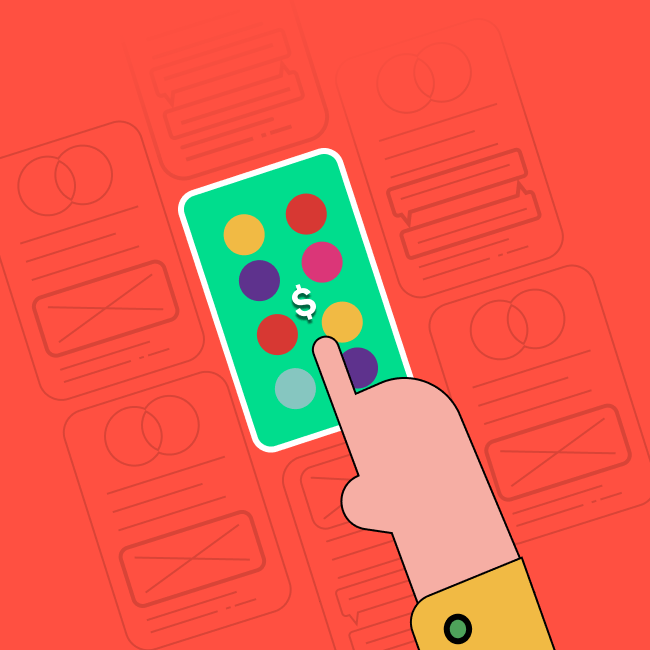Three ways to measure ROIs from UX
March 10, 2019 | Read Time : 3 mins
Table of Contents
Why measuring ROI is important?
To measure a business’s success various metrics are involved that provide accurate results of every small, and large investment. ROI is one of the most important metrics that help effectively evaluate the returns made on all kinds of investments.
Altice writes ROI is a performance measure used to evaluate the efficiency of an investment or to compare the efficiency of a number of different investments. Return on investment is a very popular metric because of its versatility and simplicity.
To calculate ROI, the benefit (return) of an investment is divided by the cost of the investment; the result is expressed as a percentage or a ratio.

What is ROI from UX
Design metrics are calculated not in terms of money but other metrics which help evaluate if the design research and work were worth the investment. Interaction Design explains ROI is used more broadly in design to describe the effect of an investment in a design-related area—e.g., investments in design, usability, or user research.
How you should Conduct it:
In simple words, UX writing is which user sees or hear when interacting with the software. It is the craft of writing simple, concise, and easy to understand the language in which users interact on a website or an app.
Set The KPIs
KPI is a short form for Key Performance Indicators, which helps form clear business objectives which are often considered while making any business decisions. It’s important to communicate KPIs across all the team. KPIs help in understanding the status of business projects which help make critical decisions in the execution to achieve the desired goal.
Here is the list of common KPIs for design evaluation:
- Revenue and Cost
- Retention Rate
- Average Revenue per customer
- Employee – turn over rate
- Employee Productivity
- NPS score
- Churn rate
The KPIs are set keeping the desired goals in mind. KPIs help in analyzing and checking the progress of the project, and ask yourself these questions before concluding on KPIs for any project
- What do you wish to achieve via this project?
- What does the project stand for, what are the top priorities that need to be communicated with the team?
- How it will help both business and users?
These may seem broad questions, but one can always break these questions into specific points, which will help in a deeper understanding.
A Specific Goal
After forming KPIs and communicating with the team, the next step to measure ROI for the team is to build a goal that will define the success of the project.
For example: If Burger King plans to increase hamburger sales by 30% by the end of April 2021
Ward Andrew shares for specific goals use the SMART framework, to define goals
S = Specific
M = Measurable
A = Achievable
R = Relevant
T = Time-Bound
Sale of hamburgers (specific) by 30% (measurable) by April 2021 (time-bound). Burger King is a large chain, and selling hamburgers is core to the business ( makes it relevant), and teams need to decide if it’s achievable or not.
Covert the Data
At every UX level from research to usability tests, the data is collected. The biggest part of user experience is every data tells a story, a problem, and helps designers understand what users like and what they dislike.
Converting data will help in adding UX metrics to business KPIs, and keep updating.
ROI formula = Return/Investment
Top Metrics affected by UX which helps in calculating ROI:
Conversion rate
Conversion tell the website how many users have completed the desired goal, and are able to convert. Conversion can be of different types such as a number of sign-ups, purchases made by users ( new and old), signing up for newsletters, etc.
Drop Off rate
Rate at which users are leaving the websites. Key factors which act as an obstacle to conversion.

Questionnaire
The questionnaire metric helps in two ways, Teston’s practical guide to calculating UX for ROI states, ‘there here are two types of questionnaires developed to measure the usability of a product: those that measure the difficulty of tasks and those that measure the overall perception of satisfaction.
Google’s HEART Framework
- Happiness
- Engagement
- Adoption
- Retention
- Task Success
Google’s HEART framework enables the teams to measure the success of every small and large metric of the website. In order to measure all the metrics, all different methods are required. In this framework, designers can pick any combinations of categories to determine the metrics.
All the above metrics provide data, which is calculated to provide accurate ROI from UX. Design is playing an important role in the growth of the website, investing in design has bought many companies such as Airbnb, Hubspot revenue increment over 200%.
Maintaining a healthy balance between UX and checking on results from the investment is also necessary, as the main role of UX is to make sure that the user is able to achieve their goals.






